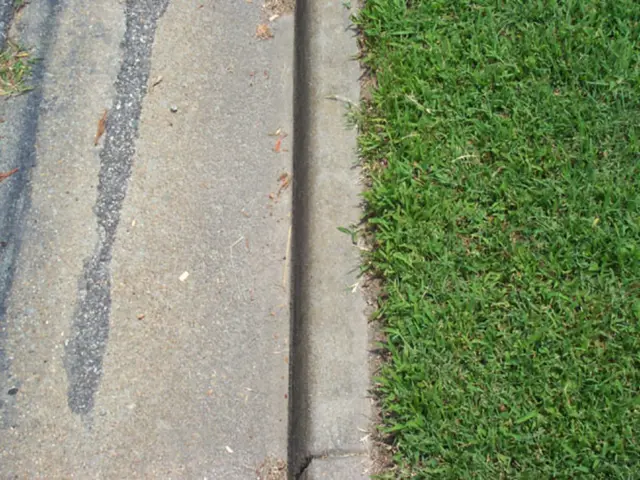Differentiating Age Spots from Skin Cancer: Key Distinguishing Features
In the grand, dappled tapestry of human skin, two characters frequently make an appearance - age spots and skin cancer. While both might surface on the same canvas, they are as distinct as chalk and cheese. Let's shed some light on their differences to help you discern the warning signs and seek medical advice when necessary.
A fine line between age spots and skin cancer
Age spots, sometimes referred to as solar lentigines or liver spots, are comparatively harmless. They are those small, darker patches that creep onto your skin as you age, usually sporting a yellow, brown, or gray hue and well-defined borders. Generally, they appear on areas exposed to the sun's crusher rays, like your face, hands, shoulders, and feet.
On the other hand, skin cancer is a formidable villain lurking in the shadows. It develops from damage caused by UV radiation or other environmental and genetic factors, causing the skin cells to multiply and spread at breakneck speed. Unlike their benign counterpart, skin cancers are harmful and potentially life-threatening.
The tell-tale signs
Spotting the difference between age spots and skin cancer can save you from a world of trouble. Here's a breakdown of the symptoms for each:
Age spot symptoms:
- Flat and smooth
- Yellow, brown, or gray
- Well-defined borders
- Ranges from millimeters to centimeters in size
- Commonly appear on sun-exposed areas
Age spots might enhance their appearance come summertime and retreat in winter.
Skin cancer symptoms:
Skin cancer symptoms can vary, but here are some warning signs:
- Asymmetrical shape
- Irregular, blurred, or ragged edges
- Changes in size, color, or shape over time
- Multiple colors on the same spot
- Pink, blue, purple, black, or brown coloring
- Raised, red patches or pale or yellow firm patches like scars
- Itching, oozing, or bleeding that doesn't heal within 4 weeks
- Crusty or scaly patches
- Raised edges that lower in the middle
If a mark on your skin starts to behave suspiciously, don't hesitate to consult a healthcare professional.
There's no reason to freak
Diagnosing age spots is as straightforward as a path through a sunflower field. A doctor or dermatologist performs a simple examination to assess the appearance, texture, and placement of the spot. If they're unsure, they might perform a skin biopsy to rule out other conditions.
Age spots don't warrant any treatment as they're harmless ... well, for the most part. Some people might opt for aesthetic procedures to diminish their visibility.
A rose by any other name
One prejudice rearing its unsightly head is the confusion between age spots and actinic keratosis, a precancerous growth. The latter arises due to UV radiation damage and shares some physical similarities with age spots. However, unlike their dormant relatives, actinic keratosis could potentially progress into skin cancer if left untreated.
When in doubt, consult your healthcare provider. Catching skin cancer early can make treatment a breeze and improve your life outlook. Better safe than sunburnt (quite literally).
- In the realm of skin care and medical conditions, age spots and skin cancer are two common entities that often coexist on human skin.
- Dermatology plays a crucial role in distinguishing between these skin conditions, as age spots are generally harmless, while skin cancer is a potentially life-threatening entity.
- Melanoma belongs to the category of skin cancer, and it is important to recognize its warning signs, such as asymmetrical shape, irregular borders, changes in size, color, or shape over time, and multiple colors on the same spot.
- For seniors, especially those with a history of excessive sun exposure, oncology and health-and-wellness initiatives emphasize regular skin checks and early detection of suspicious skin conditions.
- Practicing good skin-care habits and skin-condition awareness can aid in the prevention of skin cancer, furthering science's struggle to reduce the global burden of this disease.








